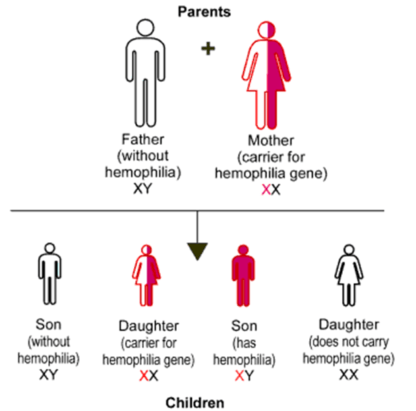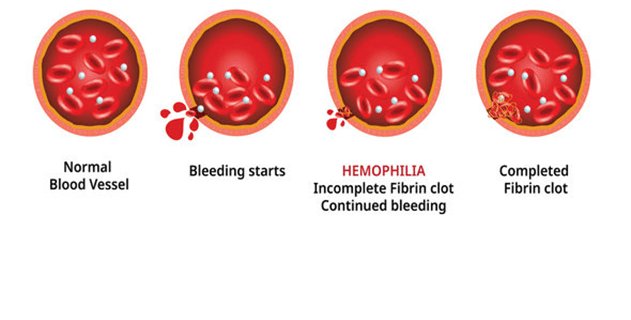Hemophilia is a bleeding condition caused by a genetic inability of the blood to clot correctly. This may cause bleeding on its own and bleeding after an injury or surgery. Hemophilia may come in a variety of forms. The two most prevalent are as follows:
Hemophilia is caused by a mutation or alteration in one of the genes that give instructions on making the clotting factor proteins that help blood clot. This alteration or mutation may cause the clotting protein to stop operating or go missing entirely. The X chromosome contains these genes. Females have two X chromosomes (XX), while men have one X and one Y chromosome (XY).


Many individuals who have hemophilia or have had family members with the disease would request that their newborn boys be tested as soon as possible after delivery. About one-third of newborns with hemophilia have a novel mutation that no one else in their family has. A doctor may do a hemophilia test if a baby exhibits specific hemophilia symptoms.
Doctors would use blood tests to see whether the blood was clotting correctly to establish a diagnosis. If it does not, they will perform clotting factor testing, also known as factor assays, to figure out what’s causing the bleeding. These blood tests would reveal the type and degree of hemophilia.
Hemophilia is best treated by replacing the missing blood clotting factor, allowing blood to clot normally. To achieve this, commercially produced factor concentrations are infused (administered via a vein). People with hemophilia may learn to administer these infusions on their own to halt bleeding episodes and, by doing so regularly (called prophylaxis), even prevent most bleeding episodes.
Prophylactic and on-demand therapies are the two best replacement treatment therapies. Hemophilia therapy might lead to complications. Antibodies to therapies and viral infections caused by human clotting factors are examples. Blood clots may occur because of treatment. It is critical to get treatment as soon as possible to limit the risk of injury to joints, muscles, and other body components.
| Cookie | Duration | Description |
|---|---|---|
| cookielawinfo-checkbox-analytics | 11 months | This cookie is set by GDPR Cookie Consent plugin. The cookie is used to store the user consent for the cookies in the category "Analytics". |
| cookielawinfo-checkbox-functional | 11 months | The cookie is set by GDPR cookie consent to record the user consent for the cookies in the category "Functional". |
| cookielawinfo-checkbox-necessary | 11 months | This cookie is set by GDPR Cookie Consent plugin. The cookies is used to store the user consent for the cookies in the category "Necessary". |
| cookielawinfo-checkbox-others | 11 months | This cookie is set by GDPR Cookie Consent plugin. The cookie is used to store the user consent for the cookies in the category "Other. |
| cookielawinfo-checkbox-performance | 11 months | This cookie is set by GDPR Cookie Consent plugin. The cookie is used to store the user consent for the cookies in the category "Performance". |
| viewed_cookie_policy | 11 months | The cookie is set by the GDPR Cookie Consent plugin and is used to store whether or not user has consented to the use of cookies. It does not store any personal data. |